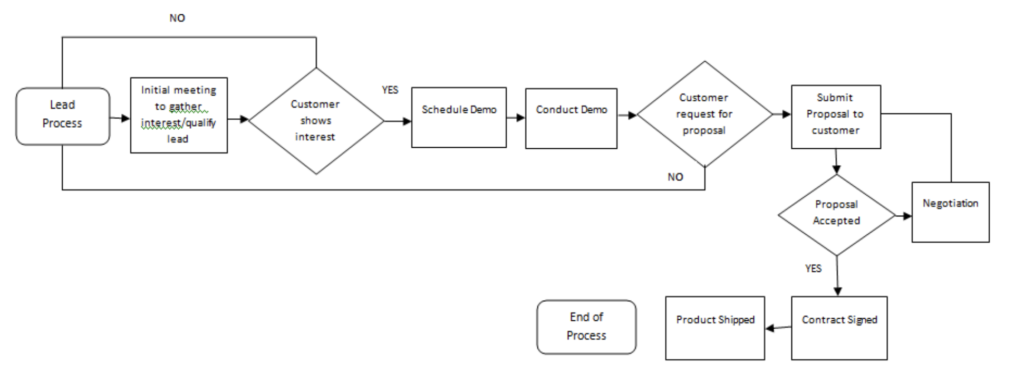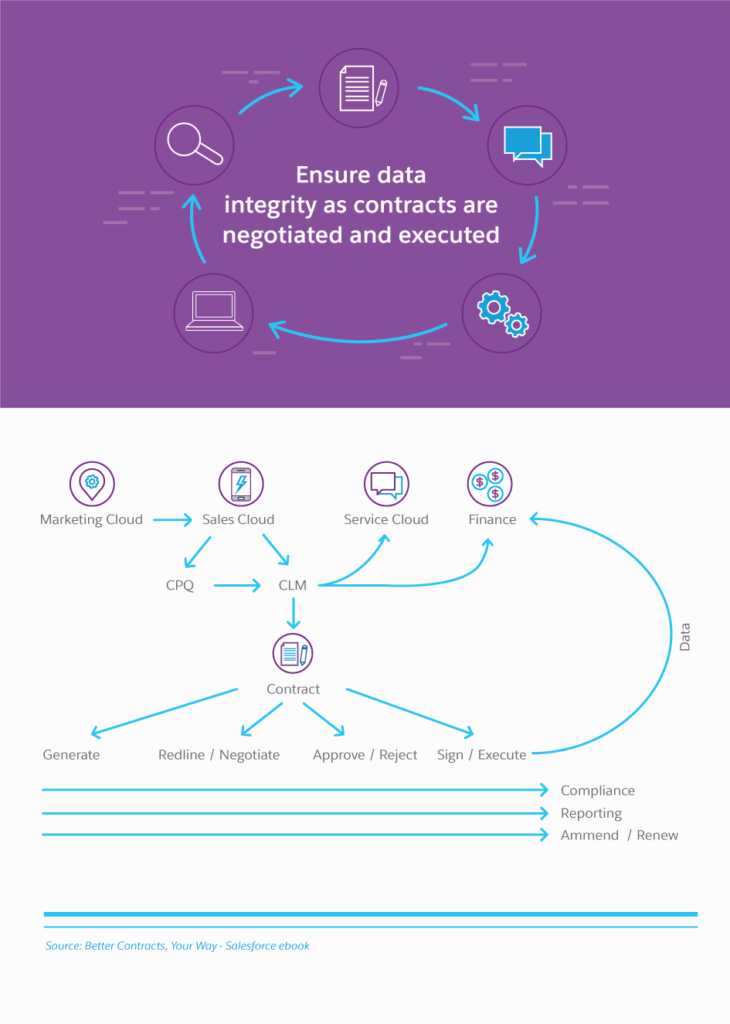This article will help guide your organization to be able to adequately review your business process document how your current system works, how it should work, how it could be improved, and understand the importance, so implementing a new software tool is as streamlined and efficient as possible. Not only will doing this decrease stress and frustration for end-users, but it will also help keep the timeline and the budget of the project stay on track! Without completing this process, multiple things can go awry. Not only can the timeline and budget of the upcoming project be at risk, but there is a chance people across the organization have a different understanding of how things do and should operate leaving room for redundancy resulting in a loss of company time, money, and resources.
Before you get started defining your processes, you’ll want to be sure you understand the Salesforce and CRM terminology to ensure you are communicating effectively. If you’re not sure about Salesforce terminology, be sure to refer to Salesforce Glossary.
Why You Need to Define Your Processes
When an organization spends the time to really define its processes and procedures in order to prepare for new software implementation, it gives them the opportunity to uncover the steps and methods they currently practice and determine what works and what doesn’t. Giving them areas to improve and streamline efforts. Everyone has a different way of doing things, which can make onboarding new employees difficult and often results in wasted time if effective methods are not communicated across the board. Determining processes and procedures prior to implementation provides the opportunity to streamline activities and improve effectiveness which will result in an increase in both employee and customer satisfaction.
Implementing new software can be frustrating, expensive, and tedious. While there are many reasons for this, defining processes and procedures can improve the overall experience and positively impact the budget and timeline. Not only can this process help improve the outcome of the implementation, but it can also improve the company as a whole. Getting the team to sit down and define their process can educate other team members on effective and successful ways of doing business, while also highlighting any potential areas of improvement. By involving end-users to identify process improvements, it can also result in them feeling ownership of the new software that you will be implementing, which will positively affect their adoption after the project is completed, making change management easier for the company as a whole, so they can concentrate on the business at hand.
Best Practices for Defining Your Processes
#1 Plan
First, start with a plan. Determine what processes, departments, and end-users will be impacted by this new implementation. It is during this phase that you will be able to determine anything and everything that may be impacted by the new software you will be adopting. Making your project plan will result in a smoother, more successful implementation and happier employees.
#2 Analyze
Then, analyze your current processes. It is during this step that you will uncover any existing bottlenecks, inefficiencies, and other areas of risk. Get input from team members and end-users to determine what processes meet the need of the company as a whole and get their buy-in. Business process analysis is vital to improving how a business operates and streamlining best practices across the organization.
It may sound tedious, but by breaking down your organization’s current process and procedures in each department until you are looking at it step by step, you will be able to better understand any redundancies, problem areas that are in need of improvement and their root causes, while also formulating a streamlined policy to implement across the board so every team member is doing it the same way, allowing for cohesive productivity.
Don’t forget to question each step. Make sure every action is providing value in some way. This will help reduce unnecessary processes and costs to your organization.
It is important to document who will be performing each task identified, who will need to approve it (if any), and who will need to know when that task is complete, so progress can move along smoothly.
#3 Design
Next, take everything you have determined in the first 2 stages and document what processes your company currently utilizes that are meaningful and move your company forward and document the process from start to finish. Take everything you have learned as to how the company currently functions, add improvements to the areas of frustration or confusion and create a roadmap of how to get to the finish line as efficiently and effectively as possible.
Now that all of the information is on the table so to speak, your organization can brainstorm on what the most efficient business process is for your company. Start with drawing out the process on a whiteboard- noting the step at its most basic level. Then draw lings connecting the different steps in the process, flowing from one to the next, until you reach the final goal. Don’t forget to discuss potential roadblocks or issues at each step and as a group, determine how to best move forward.
#4 Plan
Finally, you understand each step of your process and have determined (as best you can) how to streamline for efficiency and mitigate any potential risks. Now your team can refine the solution in a document that can be shared with the project management team that will be assisting in the implementation. They will be able to refer to it as they build, and even review it in advance and potentially uncover areas that may have been missed. Having your business plan determined, articulated, and laid out will help the development team visualize your company’s goals and provide you with an effective tool to successfully perform your work.
Understanding the CRM Process Lifecycle
Before we dive into the processes you need to create, let’s first start with the customer lifecycle. The CRM lifecycle starts with marketing, then moves on to sales, and finally ends up in customer service. When we think about the CRM lifecycle, it maps out into 5 stages:
- Reaching a potential customer
- Customer Acquisition
- Conversion
- Customer Retention
- Customer loyalty
These stages can be broken down into processes. Your organization may have multiple departments and unique processes to define. Most commonly, an organization will have a process they follow for leads, sales, contracts, and support.
Process #1: Defining the Sales Process
According to Salesforce, “The sales process is a series of steps that move a sales rep from product and market research through the close of the sale — and beyond. The number of steps in the sales process may change depending on a rep’s industry, product, and prospect, but include four key stages: research, prospecting, sales call and close, and relationship-building.
When it comes to the process for leads, they often begin in a prospect stage, nurturing stage, qualified stage, and finally the opportunity stage.“ This isn’t just about making the sales, but it’s a way to convert leads and connect with prospects and customers to develop loyal customers, consistent sales, and ultimately drive business growth.
You’re going to want to outline the key aspects of your Sales Process. For most organizations, you can start with the basic sales processes, and take it from there. You can use the below as a way to get started:
- Generating Leads:
- Where do you generate your leads from, and how do they get into your Salesforce CRM? How do you manage your leads, from lead distribution, lead qualification, when you should convert a lead, creating duplicate rules, to measuring success.
- Optimizing the Lead Flow: How do you work through the leads?
- Closing Deals: How do you manage the sales funnel? How do you measure your closed business?
Once you answer these questions, you can then develop your sales process.

Once you’ve mapped out a successful process, you’ll want to map the process to your CRM. So the next steps would be deciding what fields you need. Do you need custom fields? what reports do you need? A great idea is to set up a dashboard that helps monitor end-user adoption, to make sure your sales team is engaged with the platform after you’ve implemented these processes.
Process #2: Defining the Contract Management Lifecycle (CLM)
Once the opportunity stage has been successfully completed, you can move on to the contract stage. The Contract Lifecycle Management process generally follows the following stages:
- They start with a request for a contract/renewal
- Authoring
- Negotiation
- Approval
- Execution
- Obligations Management
- Contract Amendment
- Audit Reporting
- And back to the renewals stage
Standardizing this process can be complex, but once it’s complete it’s life-changing. When done right, you can automate the approval process, so approvers can be notified, formatting is consistent, and contracts can be fast-tracked through the approval process.

Image Source: Salesforce
Process #3: Defining the Support Process
Retaining Customers
The support is the process of solving any current customer issues effectively by any of the following methods: phone, email, live chat, tickets, and social media. Using Salesforce Service Cloud you can create separate processes for handling product support cases and customer inquiries. A great place to start would be to define your case escalation rules.
Escalation Rules: The case escalation rules are used to reassign and notify people when a case is not closed, within a specific period of time. These rules are great because they ensure that cases are not left unresolved, which ultimately leads to better customer support. So you want to define, what these rules are, and what is your process for escalation.
Each company has different requirements, so these are just three examples of where fine-tuning your processes can help you get the most out of your Salesforce investment. Of course, there are other processes that may need to be designed and incorporated into these, but these are here to help you get started thinking about processes, and how you want your CRM to work. Defining your company’s processes in these areas will help create a well-oiled machine and improve customer experience.
Implementing new software is not simple and stress-free. But by clearly defining your business process, the project roadmap will be more transparent and potential bumps in the road can be mitigated or even prevented completely. Your company’s current business process and areas of improvement need to be adequately documented so the project team completing the build clearly understands what is the end result that is needed from the software. Defining your business process will not only help streamline the company to work more efficiently, but it can also bring end-users together in a cohesive manner and establish buy-in and excitement from the team, making change management easier and increasing the adoption of the new software being implemented. Hopefully by completing this process, not only will the implementation go smoothly, but the company can save time and money by properly defining its business process and organizing the day-to-day procedures to get work accomplished!

Kirby Corbey
Client Success Manager
Kirby is one of our Account Executives at Roycon. She has over 5 years of experience in a client success role within the software industry. She was born and raised in Montana and will continue to live there even though the winters can be pretty tough.
About Roycon
We’re an Austin-based Salesforce Consulting Partner, with a passion and belief that the Salesforce platform’s capabilities can help businesses run more efficiently and effectively. Whether you are just getting started with Salesforce or looking to realize its full potential, Roycon specializes in Salesforce Implementations, Salesforce Ongoing Support, and Salesforce Integrations, and Development. We’re the certified partner to guide the way to increase Salesforce Adoption, make strategic decisions, and build your Salesforce Roadmap for success.